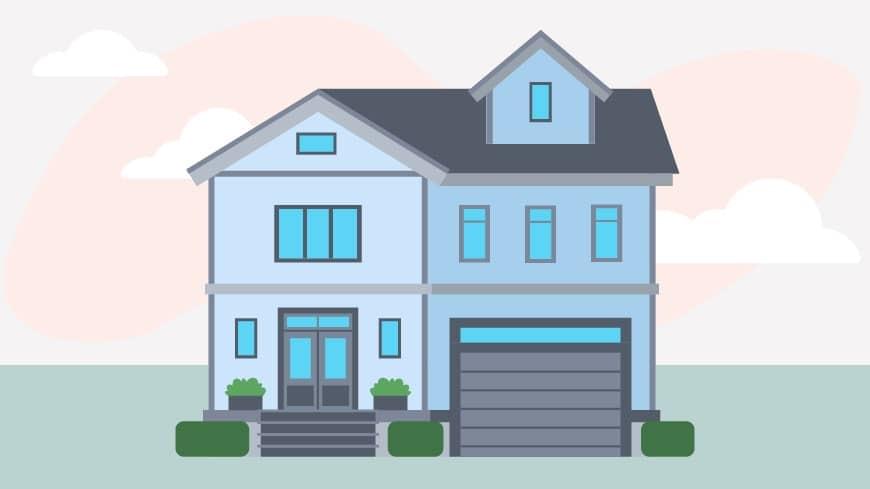5/1 ARM Mortgage: Benefits, Rates, How It Works

A 5/1 ARM mortgage offers something that fixed-rate loans can’t: a chance to start with lower monthly payments.
For the first five years, your interest rate stays locked in at a competitive rate, potentially saving you thousands*. After that, it adjusts annually. Many borrowers move, refinance, or pay off their loan before the rate enters the adjustable period and fluctuates with the market.
If flexibility and upfront savings sound appealing, this guide breaks down how a 5/1 ARM works, its pros and cons, and how to decide if it’s right for you. We offer ARM terms for many of our loan products, including various government loan options. Ready to take the next step? Rate’s Digital Mortgage makes it simple to explore your options and you can get started today!
What is a 5/1 ARM Mortgage?
A 5/1 ARM, or adjustable-rate mortgage, is a type of home loan with an interest rate that stays fixed for the first five years. After that, the rate adjusts annually.
This hybrid mortgage often starts with a lower interest rate compared to fixed-rate loans, making it a popular choice if you're looking to save money during the introductory period. It’s even more appealing if you plan to move or refinance before the adjustable period begins.
However, the adjustable part of the loan introduces more risk. If market rates rise, so can your payments. Understanding the fixed interest rate period, the adjustable phase, and how the rate adjustments work is crucial to deciding if this loan is a good fit for your financial decisions and timeline.
How Does a 5/1 ARM Work?
The details of a 5/1 ARM make it a unique mortgage option. During the start of the fixed-rate period, borrowers can benefit from steady payments and possible savings, but the adjustable phase may require you to carefully plan. Here’s what you need to know:
The Initial Adjustment Cap
This cap sets the maximum your interest rate can increase during the first adjustment after the fixed period ends. For example, if your starting rate is 4% and the initial cap is 2%, your new rate won’t exceed 6% during that first adjustment.
Understanding this setup can help you avoid sudden financial strain as you budget for the years of the loan term.
Adjustment Period
Once the five years of fixed payments are up, your interest rate adjusts annually. Each year, your new rate is determined by current market conditions, including fluctuations in the housing market or changes to the index rate (meaning).
Rates can go up, down, or stay the same, depending on the economy or federal interest rate changes. This yearly adjustment is what makes ARMs different from fixed-rate loans, so it’s important to be prepared for some fluctuations.
Periodic Rate Cap
To keep things from getting out of hand, interest rate caps, also known as periodic caps, limit how much your rate can change in any given year after the first adjustment.
For example, if your rate rose 2% the first time, a periodic cap may prevent it from increasing more than 1% the following year. This interest rate cap structure is a built-in safeguard to avoid drastic changes that could throw you off your budget.
The Index
The index is a market-based rate that serves as the base for your loan’s new interest rate. Lenders typically rely on market data to set adjustments.
When the index rate goes up or down, it directly impacts your mortgage payments. Keeping an eye on the index helps you understand what’s driving changes in your mortgage payments.
The Margin
The margin is a fixed percentage that gets added to the index to determine your new rate. For example, if the index is 2% and your margin is 2.5%, your rate would be around 4.5%.**
Unlike the index, the margin doesn’t change over time. It’s set by your lender when you take out the loan, so finding a competitive margin upfront can make a big difference in your long-term costs.
Lifetime Cap
This cap puts a hard limit on how much your interest rate can increase over the life of the loan. If you start with a 4% rate and have a 5% lifetime cap, your rate can never go above 9%, no matter how high market rates climb.
It’s your safety net, giving you peace of mind that there’s a ceiling on how much you’ll pay, even in the worst-case scenario.
What to Know About a 5/1 ARM Loan
Buyers enjoy a 5/1 ARM because of its typically lower starting rate, which can make homeownership more affordable upfront.
For buyers planning to move, sell, or refinance before the adjustable period begins, this loan type can be particularly attractive. If your goal is long-term financial flexibility, evaluating how it compares to traditional 30-year fixed-rate mortgages is critical.
However, the adjustable part of this loan introduces some risks, as rates and your monthly payments, could rise significantly after the initial five years. If you’re comfortable with some uncertainty and have a solid plan to manage interest rate changes, this type of mortgage can work well for your financial situation.
It’s also important to look at market trends and your financial situation. If you expect interest rates to remain stable or decrease, a 5/1 ARM might save you money compared to a fixed-rate mortgage.
On the other hand, in a rising rate environment, locking in a fixed rate early could provide more peace of mind.
What is a Convertible ARM?
A convertible hybrid ARM gives borrowers the option to switch to a fixed-rate loan during the adjustable period.
This feature offers added flexibility, especially for those who start with an ARM to take advantage of the lower introductory rate but later decide they want the stability of a fixed-rate mortgage.
Keep in mind, conversion usually involves a fee and certain conditions, so it’s important to weigh the costs against the benefits.
Can You Convert an ARM to a Fixed-Rate Mortgage?
Yes, and refinancing is the most common way to convert an ARM to a fixed-rate mortgage. By locking in a fixed rate, you can eliminate the unpredictability of future adjustments and get peace of mind about your monthly payments.
Partnering with a knowledgeable lender like Rate can help you explore your options and determine if switching to a fixed-rate mortgage is the right choice for your situation.
Pros and Cons of 5/1 ARM Loans
Like any financial product, a 5/1 ARM has its upsides and downsides. Understanding these can help you make an informed decision.
Pros
Low Interest Rate for the First Five Years
One of the biggest draws of a 5/1 ARM is its initial low interest rate. Compared to fixed-rate mortgages, the rate during the fixed period is often significantly lower.
This can lead to considerable savings upfront, which may be especially helpful if you're managing other expenses like home repairs, moving costs, or even real estate agent fees.
Lenders will consider your debt-to-income ratio during the approval process, and a lower rate could mean smaller monthly payments, potentially allowing you to afford a home in a higher price range.
Lower Monthly Payments for the First Five Years
With the initial rate locked in, your monthly mortgage payments will stay consistent, and lower, during the fixed period. This can free up cash flow for other projects you have, whether it’s growing your savings, making investments, or simply having a financial cushion.
A Good Short-Term Option
If you know you’ll sell your home or refinance before the adjustable period begins, a 5/1 ARM could be a strategic choice. You can enjoy the benefits of a lower rate without worrying about long-term market fluctuations.
Option for Interest-Only Payments
Some mortgage lenders offer the flexibility of interest-only payments during the fixed period. This means even lower monthly mortgage loan payments for a time, even though it’s worth bringing up that you won’t be building equity as quickly.
Cons
Interest Is Likely to Increase After the First Five Years
Once the fixed-rate period ends, the adjustable phase begins. If market rates rise, so will your interest rate and monthly payment. While caps provide some limits, the increase can still be large.
May Result in Higher Mortgage Payments Over Time
Adjustable rates introduce unpredictability. Even with periodic caps, the potential for rising payments can make long-term financial planning more challenging.
If Your Home Value Drops, You May Be Trapped in an ARM Longer
Market conditions can affect more than just your interest rate. If home values drop, the possible loss of equity could make refinancing or selling difficult. This could leave you stuck with the higher payments of an adjustable-rate mortgage.
Choosing Interest-Only Could Mean Lower Profits When You Sell Your House
While interest-only payments can ease financial pressure early on, they don’t help you build equity. When it’s time to sell, you may walk away with less profit—or none at all.
Can You Refinance Out of a 5/1 ARM?
Yes, refinancing out of a 5/1 ARM is possible and can be a smart move for borrowers who want to avoid potential rate hikes. Many homeowners choose to refinance into a fixed-rate mortgage before their adjustable period begins.
This lets you secure a stable interest rate for the long haul and eliminates the uncertainty that comes with annual adjustments.
What Is the Difference Between a 7/1 ARM and a 5/1 ARM?
The main difference between these two loans is the length of time the interest rate stays fixed. With a 7/1 ARM, the interest rate stays fixed for seven years before adjusting annually, compared to five years for a 5/1 ARM.
How to Get a 5/1 ARM Mortgage
A 5/1 ARM mortgage can be a good choice if you’re looking for lower payments upfront. Be sure to review the loan terms carefully, preferably with a financial advisor, paying attention to details like the index rate, margin, and adjustment caps.
These details play a key role in shaping your payments throughout the term of the loan. Some lenders, like Rate, provide tools like mortgage calculators to estimate your monthly payments and give you a clearer picture of your loan’s long-term costs.
Finally, ensure you’re pre-qualified before applying. This process gives you a clearer picture of what you can afford and streamlines your path to approval.
If you’re ready to take the next step, Rate’s Digital Mortgage makes it easier than ever to explore your options. With a fast, seamless process, you can explore every loan option available and start moving forward with confidence.
*Savings, if any, vary based on consumer’s credit profile, interest rate availability, and other factors. Restrictions apply.
** Sample rates and scenarios provided for illustration purposes only and are not intended to provide mortgage or other financial advice specific to the circumstances of any individual and should not be relied upon in that regard. Rate, Inc. cannot predict where rates will be in the future.




